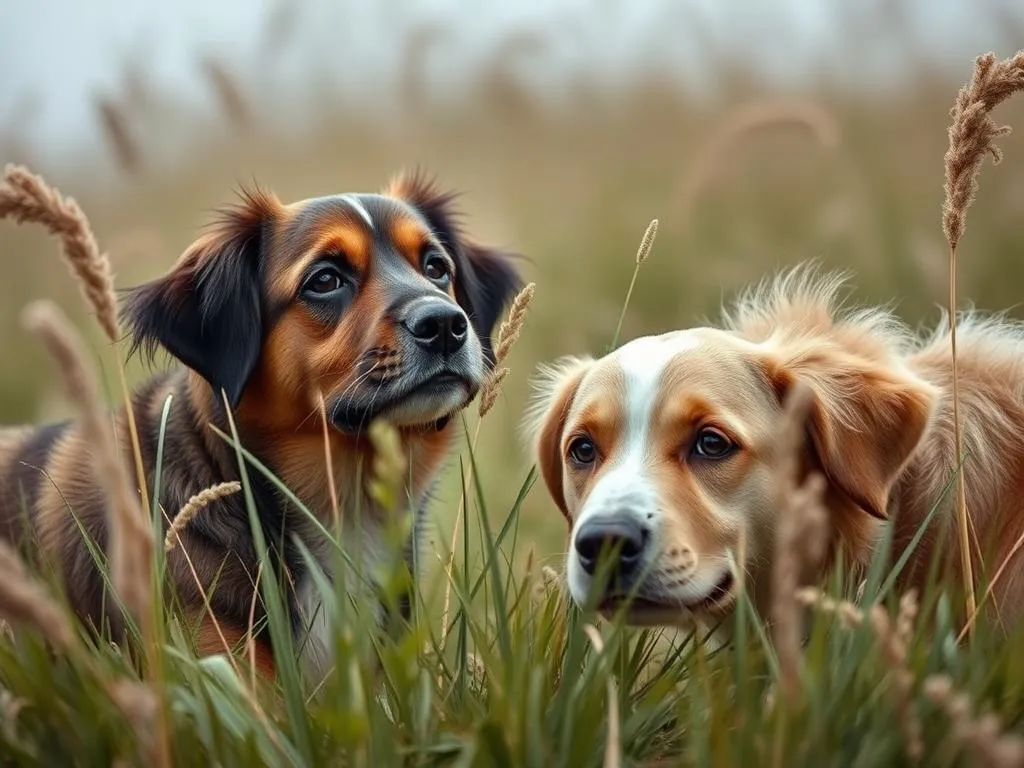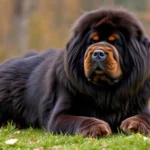
Creating a pet-friendly lawn is essential for dog owners who want their furry friends to enjoy the outdoors safely. Choosing the best grasses for dogs not only enhances your yard’s aesthetics but also ensures that your pet has a comfortable and enjoyable space to play. In this article, we will explore the types of grasses that are safe for dogs, their benefits, maintenance tips, and alternatives to traditional grass for pet-friendly landscaping.
Understanding Dog-Friendly Grasses
What Makes Grass Dog-Friendly?
When considering the best grasses for dogs, it’s crucial to look for non-toxic characteristics. Some grasses contain chemicals or compounds that can be harmful if ingested. Therefore, selecting grass varieties that are safe for your pets is essential. Additionally, we need to consider durability and wear resistance, as active dogs can easily damage less resilient grass types.
Importance of Choosing the Right Grass
Choosing the right grass for your lawn can significantly impact your dog’s health and comfort. A soft, lush lawn provides a safe space for your dog to run, play, and lounge. Moreover, selecting appropriate grasses can also have environmental benefits, such as reducing the need for chemical fertilizers and pesticides.
Types of Grasses Ideal for Dogs
Cool-Season Grasses
Cool-season grasses thrive in the northern climate zones and are ideal for areas that experience cold winters and moderate summers.
Kentucky Bluegrass
Kentucky Bluegrass is one of the most popular grass types for lawns. It features a rich, green color and a soft texture that is gentle on your dog’s paws. This grass is highly resistant to wear and recovers quickly from damage, making it a great choice for active dogs. To maintain Kentucky Bluegrass, ensure regular watering, especially during dry spells, and mow it to a height of 2.5 to 3 inches.
Fescue
Fescue is another excellent choice for pet owners. This grass variety is known for its drought resistance and ability to thrive in various soil types. Fescue has a fine texture that dogs love to run on, and it can handle foot traffic well. For optimal growth, maintain a mowing height of about 3 inches and water it deeply but infrequently to establish a strong root system.
Perennial Ryegrass
Perennial Ryegrass germinates quickly and establishes rapidly, making it ideal for quick patches and overseeding. Its fine blades are soft underfoot, providing comfort for your pets. This grass type is also tolerant of cool temperatures. To care for Perennial Ryegrass, mow it at a height of 2 to 4 inches and ensure it receives adequate moisture, especially during its establishment phase.
Warm-Season Grasses
Warm-season grasses flourish in warmer climates and are perfect for southern regions.
Bermuda Grass
Bermuda Grass is a robust and durable option for those with active dogs. It has a dense growth habit that can withstand heavy foot traffic and recover quickly from wear and tear. Bermuda Grass thrives in full sun and is drought-resistant. To maintain it, mow it to a height of 1 to 2 inches and water deeply during dry periods.
Zoysia Grass
Zoysia Grass is another excellent choice for dog owners. It has a thick, carpet-like texture that provides cushioning for your pet while playing. Zoysia is tolerant of heat and drought, making it suitable for warmer climates. A mowing height of 1 to 2 inches is best, and it requires moderate watering to keep it lush.
Buffalo Grass
Buffalo Grass is a native grass that is incredibly drought-resistant and requires minimal maintenance. This grass type is soft and comfortable for dogs, providing a great play area. It thrives in full sun and can tolerate some shade. Maintain a mowing height of about 2 to 4 inches to keep it healthy.
Benefits of Dog-Friendly Grasses
Safety for Dogs
One of the primary benefits of choosing the best grasses for dogs is safety. Dog-friendly grasses are non-toxic and help reduce the risk of allergies or irritations caused by harmful chemicals found in certain grass types. This ensures your pet can roam freely without the worry of potential health risks.
Comfort and Playability
Softness and cushioning are essential for dogs, especially when they are running and playing. The right grass can provide a comfortable surface that minimizes the impact on your pet’s joints. Additionally, durable grasses resist wear from dog activities, ensuring your lawn stays healthy and vibrant.
Environmental Impact
Opting for drought-resistant grasses like Buffalo Grass or Zoysia Grass can significantly reduce your lawn’s water consumption. These grasses contribute to local biodiversity by providing habitats for various insects and wildlife, making them an environmentally friendly choice.
Maintenance Tips for Dog-Friendly Lawns
Mowing Practices
To keep your lawn healthy, it’s vital to follow proper mowing practices. Different grasses have specific ideal heights for mowing. For instance, Kentucky Bluegrass should be mowed to about 2.5 to 3 inches, while Bermuda Grass can be kept shorter at 1 to 2 inches. Regular mowing promotes healthy growth and reduces the risk of pests.
Watering Guidelines
Efficient watering is crucial for a thriving lawn. Deep watering encourages strong root development, while frequent shallow watering can lead to weak roots. Most grasses benefit from about 1 inch of water per week, including rainfall. Make sure your lawn has proper drainage to prevent water pooling, which can damage grass roots.
Fertilizing and Soil Health
Using the right fertilizers is essential for maintaining a dog-safe lawn. Look for organic or natural fertilizers that won’t harm your pets. Additionally, soil testing can help you determine the nutrient needs of your lawn. Amend your soil based on these results to promote robust grass growth.
Dealing with Dog Waste
Cleaning up after your dog promptly is essential for lawn maintenance. Dog waste can lead to lawn damage if left unattended. Consider designating a specific area for your pet to relieve itself, and use a pet-friendly solution to mitigate any potential damage from urine.
Troubleshooting Common Lawn Issues
Dealing with Thinning Grass
If you notice thinning grass, it could be due to over-mowing, insufficient watering, or pest issues. Evaluate your mowing height and frequency, and ensure you’re providing enough moisture. If pests are a concern, consider using organic pest control methods to protect your lawn.
Weeds and Pests
Weeds can compete with your grass for nutrients and water. To manage weeds safely, consider using natural herbicides or manually pulling them out. Additionally, regular lawn maintenance can help prevent weed growth and keep your lawn looking its best.
Seasonal Care
Each season requires specific care for your grass. For cool-season grasses, such as Kentucky Bluegrass, winterization involves aerating the lawn and applying a late-season fertilizer to promote healthy growth in spring. In contrast, warm-season grasses like Bermuda Grass benefit from careful monitoring during the hot summer months to ensure they don’t dry out.
Alternatives to Traditional Grass
Clover as a Dog-Friendly Ground Cover
Clover is an excellent alternative to traditional grass. It is soft, resilient, and requires less water, making it a sustainable choice. Clover also has the added benefit of being non-toxic to dogs. It grows well in various soil conditions and can handle light foot traffic.
Artificial Turf Options
While not a natural option, artificial turf can provide a safe and low-maintenance alternative for dog owners. It remains green year-round and doesn’t require mowing or watering. However, it’s essential to choose pet-friendly turf that doesn’t retain heat and is easy to clean.
Xeriscaping with Dog-Safe Plants
If you’re looking for a more innovative approach, consider xeriscaping with dog-safe plants. This landscaping technique uses drought-resistant plants that require minimal water. Incorporating native plants can create a beautiful, environmentally friendly space that is safe for your pets.
Conclusion
In summary, selecting the best grasses for dogs involves understanding the characteristics that make grass safe and suitable for your pets. Cool-season grasses like Kentucky Bluegrass, Fescue, and Perennial Ryegrass, as well as warm-season options like Bermuda Grass, Zoysia Grass, and Buffalo Grass, all offer unique benefits for dog owners. With the right maintenance practices, you can create a safe and enjoyable outdoor environment for your furry friends. By choosing wisely, you not only enhance your lawn but also contribute positively to your pet’s well-being.








